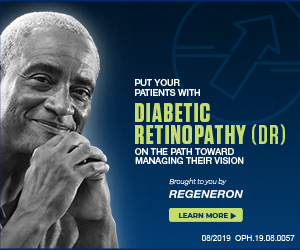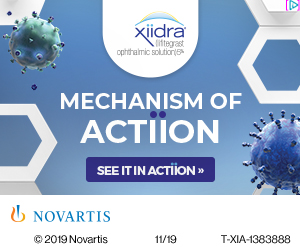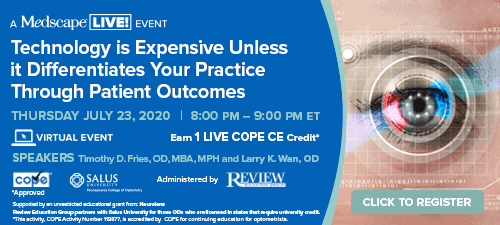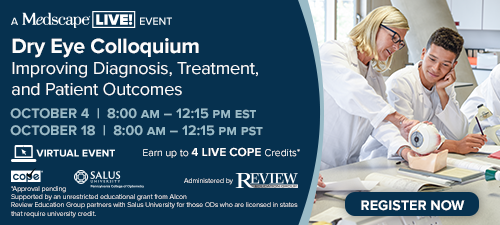
A
weekly e-journal by Art Epstein, OD, FAAO
Off the Cuff: An Urgent Request
In addition to the challenges of coping with the COVID outbreak, our profession is under serious attack on a number of fronts. One of them is the recent FTC change to the Contact Lens Rule, a glaring example of unnecessary overregulation, bureaucratic stupidity and government overreach that I wrote about a few weeks ago. I detailed the lack of justification for the new rule and the clear lack of understanding demonstrated by the FTC regarding contact lens providers and sellers. What you may not fully understand, however, is how this will impact you and your practice. The new rule will not only create a serious economic burden, but ultimately expose every eye care practitioner to severe penalties for even minor and unintentional infractions. The rule also comes at the worst possible time, with many practices reeling from the COVID outbreak. Once it is in effect, it will be virtually impossible to reverse. It has to be stopped now, and that cannot be accomplished without all of us working together. The AOA is aggressively pursuing ways to stop this travesty before it goes into effect in September. If you are an AOA member, you have received a call to action from AOA President William Reynolds asking for your involvement. If you are not an AOA member, I am personally asking you to get involved now. I have reprinted a section of the AOA email below. With their permission, you can use the resources below to take action immediately. The AOA’s resolve to continue fighting against this punitive move only grows stronger by the day. Right now, we're implementing a multi-tiered advocacy strategy aimed at pushing back even harder and growing the level of supporters that we’ll need on our side if we are to stand a chance at breaking through in these challenging times and with all of the election year noise now and in the weeks to come. With only a couple short weeks before Congress leaves the nation’s capital for its summer break, we must immediately launch a heightened and sustained campaign to make sure our lawmakers know the devastating impact these new mandates will have on us, our practices and our patients. Our elected representatives must act now to prevent these costly, new requirements from being put upon us, especially in the midst of the public health emergency.I’m asking every doctor, optometric professional, and student to join me today and commit to taking the following actions while encouraging at least three other colleagues to join us in making our voices heard. 1. Call your two U.S. Senators and one House member each week until the end of July. To do so, place separate calls with the U.S. Capitol switchboard at 202.224.3121, each time asking for either one of your two U.S. Senators or one House member (U.S. House member lookup). Please use this script and share any action reports or need for AOA staff follow-up with Matt Willette, AOA's Director of Congressional Relations, at mwillette@aoa.org. 2. After you place your call, use the AOA’s Legislative Action Center or text "FTC" to 855.465.5124 to send an urgent message to your legislators in support of pushing back against the FTC’s overly burdensome contact lens rule changes. Please contact Matt Willette with any questions, to discuss strategy or to report on the responses you're receiving from your Senators and House members. This is important. We can only succeed if we work together on this. Consider this a personal request for each one of you to take action today. These phone calls are easy and essential. Please join me in acting now, before it is too late.
|
|||||
 |
||
| Efficacy of Azithromycin Eye Drops for Individuals with Meibomian Gland Dysfunction-associated Posterior Blepharitis | ||||
To examine the safety and efficacy of azithromycin eye drops in Japanese individuals with meibomian gland dysfunction (MGD)-associated posterior blepharitis, individuals with MGD-associated posterior blepharitis who visited the Itoh Clinic, Saitama, Japan, were randomly assigned to receive azithromycin (1%) eyedrops (AZM group, 16 eyes of 16 patients) or preservative-free artificial tears (control group, 20 eyes of 20 patients) for two weeks. All subjects also applied a warming eyelid compress twice per day. Subjective symptoms (Standardized Patient Evaluation of Eye Dryness [SPEED] score), lipid layer thickness (LLT) and interferometric pattern of the tear film, plugging and vascularity of the lid margin, noninvasive break-up time of the tear film (NIBUT) and fluorescein-based break-up time of the tear film (TBUT), corneal-conjunctival fluorescein staining score, tear meniscus height, meibum grade, meiboscore, tear osmolarity, and Schirmer test value were determined before and after treatment. Side effects of treatment were also recorded. In the AZM group, SPEED score, LLT, interferometric pattern, plugging and vascularity of the lid margin, NIBUT, TBUT, meibum grade and tear osmolarity were significantly improved after treatment, compared with baseline. The SPEED score, interferometric pattern, plugging, vascularity, meibum grade and tear osmolarity were also significantly improved after treatment in the AZM group compared with the control group. Common side effects in the AZM group were transient eye irritation and blurred vision. |
||||
SOURCE: Arita R, Fukuoka S. Efficacy of azithromycin eyedrops for individuals with meibomian gland dysfunction-associated posterior blepharitis. Eye Contact Lens. 2020; July 7. [Epub ahead of print]. |
||||
 |
||
| Differentiation of Nonarteritic Anterior Ischemic Optic Neuropathy from Normal-tension Glaucoma by Comparison of the Lamina Cribrosa | ||||
To compare lamina cribrosa (LC) morphology between eyes with nonarteritic anterior ischemic optic neuropathy (NAION) and eyes with normal-tension glaucoma (NTG) in the Korean population, this retrospective study evaluated 48 eyes with NAION, 48 eyes with NTG; and 48 healthy control eyes matched by age, intraocular pressure, axial length and optic disc area. Eyes with NAION and NTG were also matched by retinal nerve fiber layer (RNFL) thickness in the affected sector. Optic nerve heads were scanned using enhanced depth imaging spectral-domain optical coherence tomography. LC depth (LCD) and the LC curvature index (LCCI) were measured at seven locations spaced equidistantly across the vertical optic disc diameter. LCD and the LCCI were compared in the three groups. RNFL thicknesses of the matched affected sectors did not differ between the NAION and NTG groups. LCD and the LCCI were significantly larger in the NTG group than in the NAION and healthy control groups at all seven planes, but were comparable in the NAION and healthy control groups. The LCCI was larger in the affected than in the unaffected sector of NTG eyes but did not differ in NAION eyes. LCD did not differ between affected and unaffected sectors in either NAION or NTG eyes. Investigators wrote that LC morphology differed in eyes with NAION and NTG, despite a similar degree of RNFL damage. They added that evaluation of LC morphology may help to understand the distinctive pathophysiology of NAION and to differentiate NAION from NTG eyes.
|
||||
SOURCE: Kim JA, Lee EJ, Kim TW, et al. Differentiation of nonarteritic anterior ischemic optic neuropathy from normal tension glaucoma by comparison of the lamina cribrosa. Invest Ophthalmol Vis Sci. 2020;61(8):21. |
||||
 |
||
| Ocular Hypertension, Glaucoma or Compressive Neuropathy in Patient with Active TED | ||||
Severe cases of thyroid eye disease with high intraocular pressure and visual field defects are a real diagnostic challenge requiring the exclusion of dysthyroid optic neuropathy and differential diagnosis with glaucoma. This case report involved a patient with active thyroid eye disease (TED), decreased visual acuity and elevated intraocular pressure. A 52-year-old woman with TED in both eyes, class 2c3c4a6a (NOSPECS), with 6 points (by CAS) activity, who received corticosteroid therapy to a maximum cumulative dose of 5750 mg, with non-insulin-dependent diabetes mellitus and topical antihypertensive treatment with tapticom, brizadop, and luxfen received a full ophthalmological exam, tonometry, exophthalmometry, computer perimetry, optical coherence tomography (OCT) and computed tomography (CT) scan of orbits. The following results were obtained: BCVA of right eye=0.6, BCVA of left eye=0.3; TOD=26 mmHg and ТОS=21 mmHg; exophthalmometry: 30 mm for the right eye and 31 mm for the left one; diplopia in all directions; edema and hyperemia of the eyelids and conjunctiva; eyelids retraction, sluggish pupil reactions, normal color vision, transparent ocular media, indistinct borders of the optic nerve disc, without glaucomatous excavation; tortuosity and dilation of the venules; retina—without diabetic changes; maculas—with normal reflex; CP datа for a localized inferotemporal visual field defect; CT data for thickening of all extraocular muscles; soft tissue orbital edema; and optic nerves compression. Researchers wrote that the results confirmed the presence of dysthyroid optic neuropathy, based on the decreased visual acuity, ophthalmo-scopic evaluation of the optic nerve head, lack of glaucomatous OCT changes, atypical perimetric changes and CT data. They added that optic neuropathy is the most severe complication in patients with TED, which develops due to the compression of the optic nerve and/or its blood supply from the enlarged extraocular muscles and soft tissues in the orbital apex and due to the mechanical tension of the optic nerve in cases when moderate or severe proptosis is present. |
||||
SOURCE: Stoyanova NS, Konareva-Kostianeva MI, Mitkova-Hristova VT. Ocular Hypertension, Glaucoma or Compressive Neuropathy in Patient with Active TED. Folia Med (Plovdiv). 2020;62(2):418-23. |
||||
 |
||
| News & Notes | ||||||||
| Hoster Succeeds Henne as Publisher of the Review Group Jobson Medical Information announced that Michael Hoster, a 13-year veteran of the company, was named Publisher of the Review Group of publications and services. This includes the titles Review of Optometry, Review of Ophthalmology, Review of Cornea and Contact Lenses and Retina Specialist, as well as a host of affiliated websites, e-newsletters and other digital products designed to provide robust clinical insight and education to optometrists and ophthalmologists. Hoster assumed the position previously held by veteran publisher and industry icon James Henne since 2014. “Mike has been an instrumental player at the Review Group for 13 years, playing key roles on our editorial and sales teams,” said Marc Ferrara, president of Jobson’s Optical Group. “Of course, we will all miss Jim Henne, who has done an outstanding job leading the Review Group. Jim's insights, leadership skills and witty charm make him a very unique leader.” Hoster has spent his entire professional career at Jobson, beginning as an associate editor for Review of Optometry in 2007. He also served as the magazine’s managing editor from 2012 through 2014. Hoster later transitioned to Review’s sales team in 2015, “Mike has become an extremely valuable team member over this period, and has developed a keen understanding of the markets we serve and the products we deliver,” added Ferrara. “The Review Group has a sterling reputation for providing the most cutting-edge, clinically relevant information available to the eye care community,” said Hoster. “Jim has been an invaluable leader to our group, a consummate mentor to me and a true inspiration to our entire company. I look forward to following in his footsteps, and working with our team in an effort to serve all the needs of our readers and industry partners.” Read more. |
||||||||
| NECO Adds Five New Members to Board of Trustees The New England College of Optometry announced five new members to its board of trustees. The new trustees are Linda Bennett, OD, founder of Bennett Family Eye and former president of the Massachusetts Society of Optometrists; Katherine Coffey, OD, founder of Coffey Eye Care and former president of the Massachusetts Society of Optometrists; Alan Glazier, OD, founder of ODs on Facebook; Janet LaBreck, former Obama White House Commissioner of the Rehabilitation Services Administration and first Black Commissioner for the Massachusetts Commission for the Blind; and Valarie Ricciardi, OD, practitioner with and administrator of Central Massachusetts Vision Source, as well as Vision Source Regional Administrator. Read more. |
||||||||
| Real-time Telemedicine Consulting App for ODs Live Telasight’s new telemedicine platform that provides real-time practitioner-to-practitioner consultations went live July 1. Telasight is designed to help optometrists treat and manage more medical eye disease by providing users with instant second opinions while the patient is in their office. Optometrists can now sign up and get a consultation right away, to help reduce unnecessary referrals, build stronger doctor patient relationships and increase their own revenue from medical insurance billing with Telasight. Learn more.
|
||||||||
| Essilor Vision Foundation Announces Partnership with FoxFire FoxFire Systems Group, which specializes in ophthalmic-specific electronic health records and practice management software, is partnering with Essilor Vision Foundation (EVF) to facilitate charitable donations to EVF's See Kids Soar program. The See Kids Soar program raises money to help ensure that children across America receive vision care. FoxFire's technology will make it easier for eye doctors to collect funds by enabling patients to add a donation at checkout. Read more. |
||||||||
| Study: Separately Dosed Eyedrops Have Equivalent Outcomes as ImprimisRx Combination Drop for Postop Care ImprimisRx announced that a randomized contralateral eye study comparing patient outcomes and preferences for a combination therapy with individual eye drop medications after ocular surgery revealed that ImprimisRx’ combination drop showed similar health outcomes to multiple separately dosed drops. The combination drop also was unanimously preferred by patients as it was easier to manage. The study, published in the July 10 edition of Clinical Ophthalmology, followed 33 patients who underwent cataract surgery and received the combination drop (prednisolone acetate 1%, gatifloxacin 0.5%, and bromfenac sodium 0.075%) in one randomly selected eye, while the other eye received the same individual eye drop medications post-surgery. Read more. |
||||||||
|
Optometric Physician™ (OP) newsletter is owned and published by Dr. Arthur Epstein. It is distributed by the Review Group, a Division of Jobson Medical Information LLC (JMI), 19 Campus Boulevard, Newtown Square, PA 19073. HOW TO ADVERTISE |


